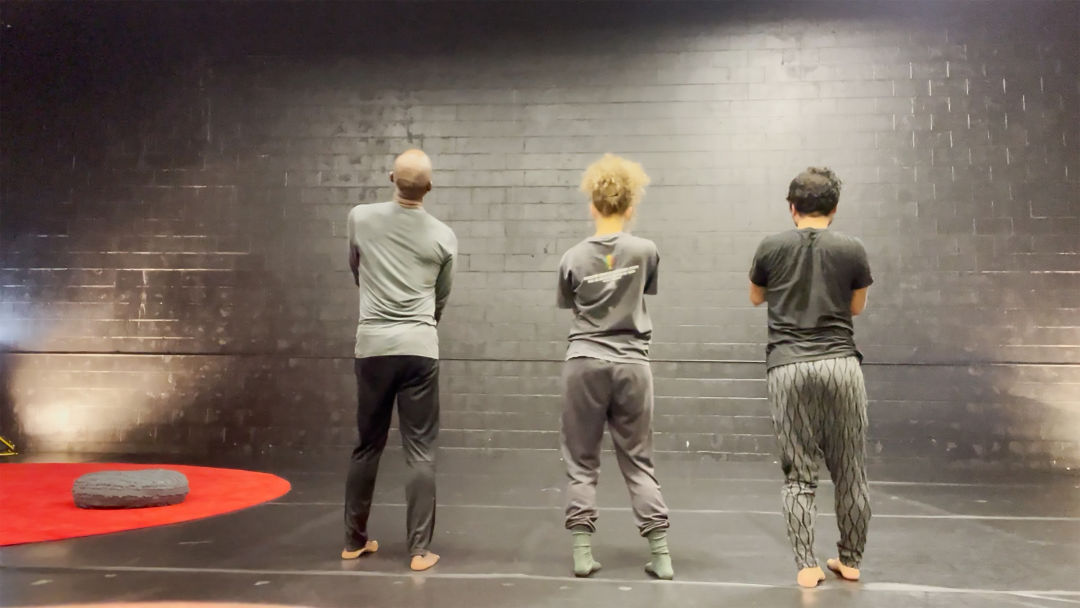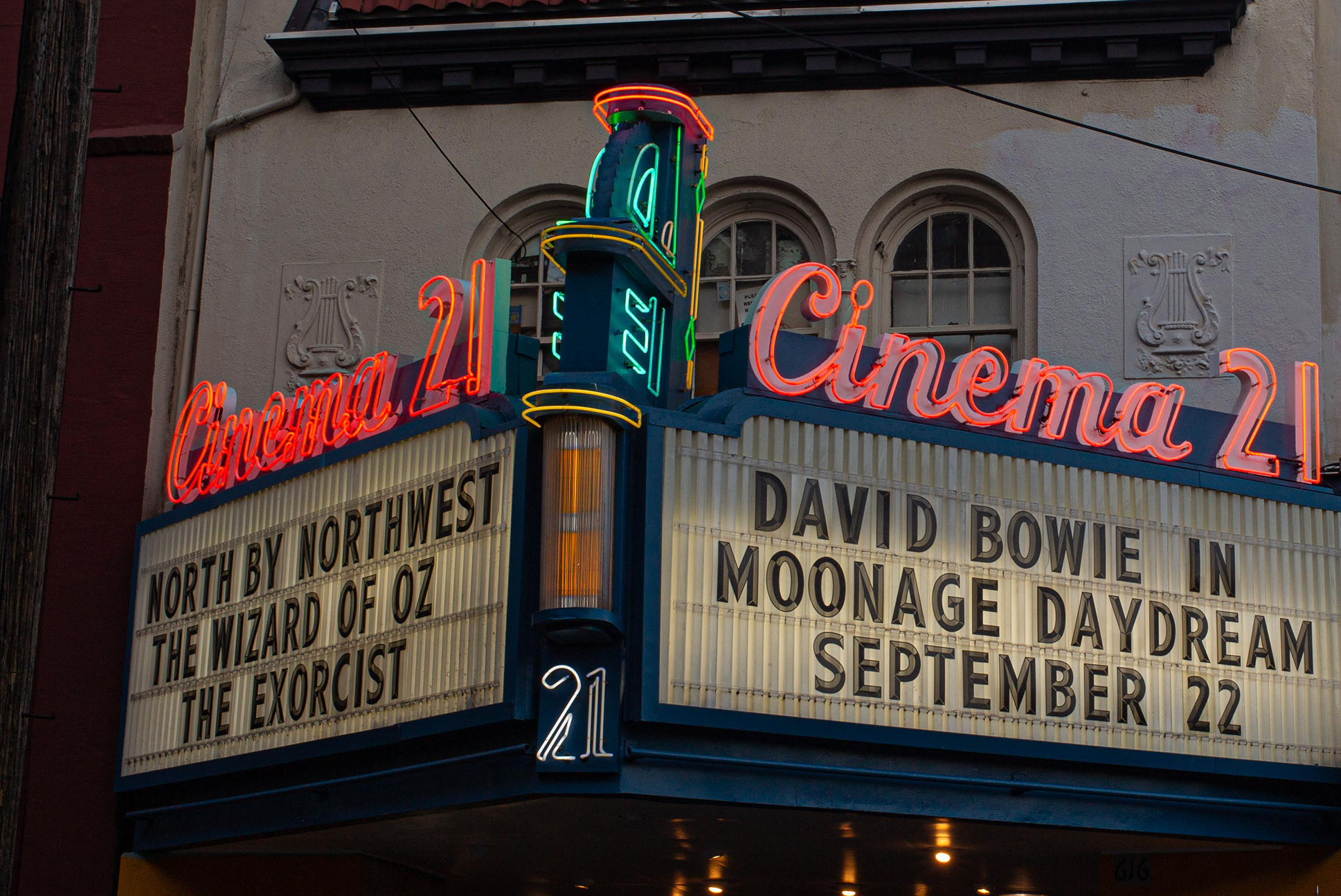At TBA 2022, NOTHINGBEING Brings Relief from All the Talking

Image: Courtesy Takahiro Yamamoto
For the first few days of the Time-Based Art Festival, I attended shows that relied on words. Sylvan Oswald described a desert road trip in hallucinatory, impressionistic language. Joseph Keckler sang, in German and Italian and English, about holographic frogs and sex with ghosts. Adrienne Truscott did a meta stand-up set, recounted the challenges of waste disposal while living in a camper van in Brooklyn, and mused on memoir.
Which meant I experienced NOTHINGBEING, a piece “instigated” by Portland choreographer Takahiro Yamamoto, as something of a relief. For an hour on Sunday afternoon, in the low light of a black-walled room, I didn’t have to worry about processing language or story. There was no obvious narrative thread to follow or lose, no images or scenes I had to construct in my own mind.
Instead, I watched as Yamamoto and two other performers, Anna Martine Whitehead and David Thomson, undulated and crawled and rolled and clapped and flailed and pulsed. Sometimes they moved together, as in the beginning, when they stood with their backs to the audience and inched very slowly toward us. More often they were apart, single-mindedly focused on their own tasks: Whitehead standing on their hands and drumming their toes against the wall, Yamamoto determinedly balancing a cushion on his face, Thomson coiling and uncoiling an armful of plastic sheeting.
In the TBA program, Yamamoto describes NOTHINGBEING as “a project that investigates ways to embody the presence of nothingness and ‘being.’” It’s the sort of wispy phrase that threatens to dissolve upon a moment of consideration (or to send potential audiences running). But there’s a studiousness to the work, a level of devotion from the collaborators—Samita Sinha is credited as an additional researcher—that’s impossible to ignore. Each has moments of great physical exertion, repeating choreographic phrases in a sort of meditation on endurance. And there are bursts of play, too, as when a grunting Whitehead crawls into a large plastic tub and waggles their legs in the air. Rigor and levity each has its place here.
Though there’s some propulsive, percussive music early on, most of the sounds come from the performers themselves as they hum, sigh, and groan. At one point Thomson’s soft vocalizations build almost to song, crescendoing into a wail and then receding into sharp breaths as his rippling movements go ragged. It’s not uncommon in dance to hear the breath, or even for it to become part of the score, but the nonverbal utterances in NOTHINGBEING are more vulnerable than mere respiration.
In the program, Yamamoto says he’s interested in “possibilities for the unfiltered self,” and it was impossible for me not to compare the sounds coming from the performers with those coming from the small child seated near me, who unselfconsciously hummed and panted and murmured. When—except maybe in sports and during sex—do adults allow themselves to make such noises?
I did, however, clock one spellable, Scrabble-legal word. Toward the end of the hour, Whitehead spent several minutes whirling through rapid, repetitive movement. As their exhaustion grew apparent, Thomson approached. Standing at Whitehead’s side, Thomson spoke. “Hey,” he said, and the tender syllable hung in the air as Whitehead fell into his arms, letting his body cradle theirs. Sometimes one word is enough.




